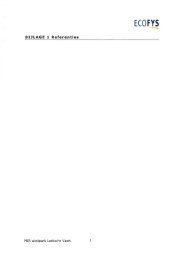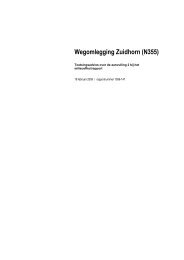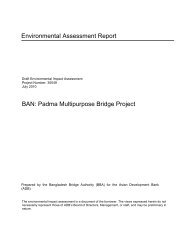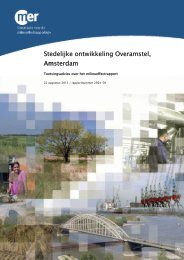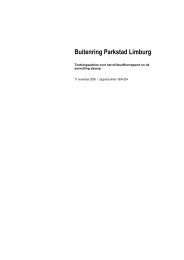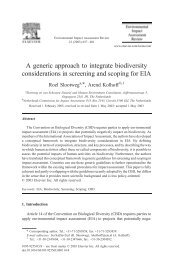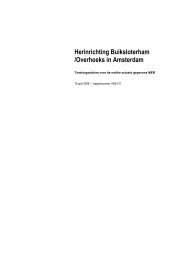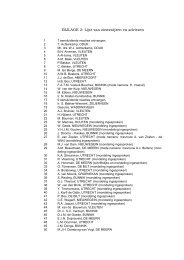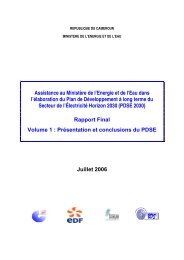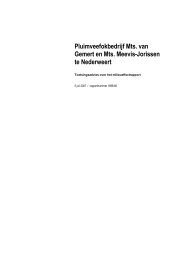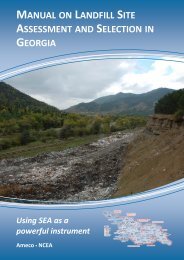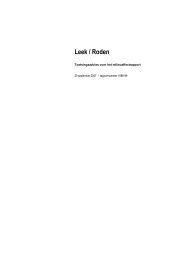Scoping Advice for the Dutch IWRM Support Programme Rwanda
Scoping Advice for the Dutch IWRM Support Programme Rwanda
Scoping Advice for the Dutch IWRM Support Programme Rwanda
You also want an ePaper? Increase the reach of your titles
YUMPU automatically turns print PDFs into web optimized ePapers that Google loves.
Working group 3 – Catchment choice and approachUsing <strong>the</strong> map produced on <strong>the</strong> first day, group 3 discussed more in-depth issues per catchment(see <strong>the</strong> table 1 below <strong>for</strong> results). Subsequently, <strong>the</strong> working group was asked which catchment<strong>the</strong> EKN ought to start working in, if it would decide to start in selected catchments. The groupselected CKIV as most important, followed by NMUK. CKIV knows a lot of industrial activity,flooding problems and transboundary problems with DRC It consists of around 7 districts. Thereare no o<strong>the</strong>r big <strong>IWRM</strong> projects; <strong>the</strong> USAID project is in south and east of <strong>the</strong> country.The group concluded by discussing how to start with <strong>IWRM</strong> at catchment level? What kind bottomup approaches would be possible?- first of all we analyse <strong>the</strong> exact priorities per catchment;- district level is most important; <strong>the</strong>y have joint action <strong>for</strong>um which coordinates allstakeholders in development. Effective <strong>IWRM</strong> requires integration in district action plans;- at lower levels <strong>IWRM</strong> it concerns <strong>the</strong> cells, sectors and <strong>the</strong>n district. It needs to be clarifiedwho is really in charge: <strong>the</strong> chef de village; water user associations? These are farmersmainly;- what are going to be <strong>the</strong> biggest challenges during implementation of <strong>the</strong> water law?o <strong>the</strong> managers of <strong>the</strong> water user associations do not have sufficient capacity; lackof management skills;o data collection and data management;o mismatch between administrative units and catchments; so <strong>the</strong>re is acoordination issue.- multi stakeholder <strong>for</strong>ums are present but at district level. Would be better to organise thaton catchment level; a sort of catchment JAF (joint action <strong>for</strong>um);- Nile/Kivu catchment: Gishwati has a district overarching task <strong>for</strong>ce to improvecoordination between districts. Could be an interesting example.Workshop closingThe overall workshop concluded with presentations of <strong>the</strong> working groups’ results. The followingobservations were made:- more evidence <strong>for</strong> catchment selection is required. The criteria used might not becomplete. The criteria can be subdivided into economic, social and ecological, and caninclude pragmatic reasons as well;- management aspects need to be properly addressed also from <strong>the</strong> perspective of thosethree categories of criteria;- two discussions: should we go <strong>for</strong> a sub-catchment or should we go <strong>for</strong> <strong>the</strong> two mainbasins (Nile/Congo)?Appendix 6 page -3-



